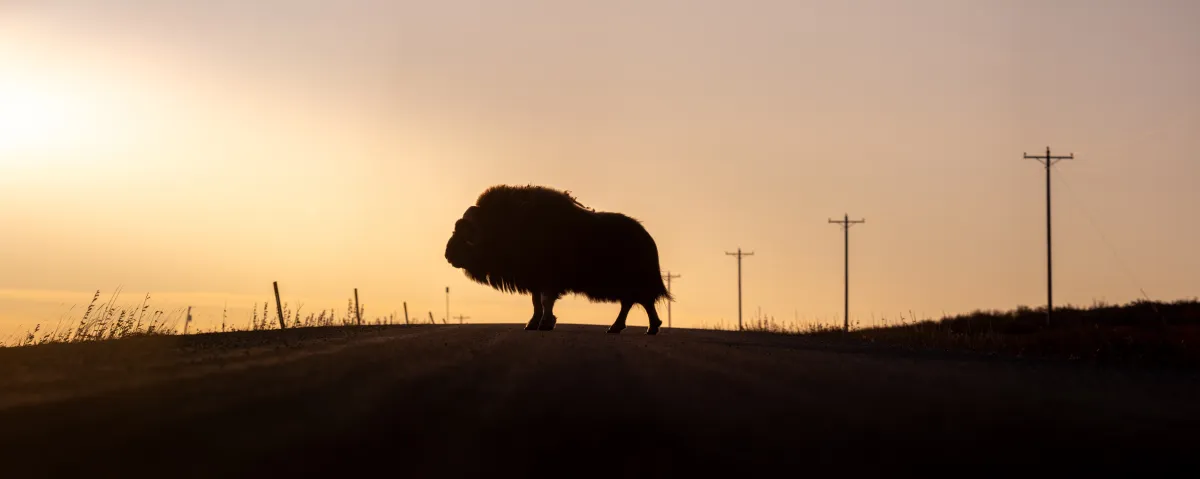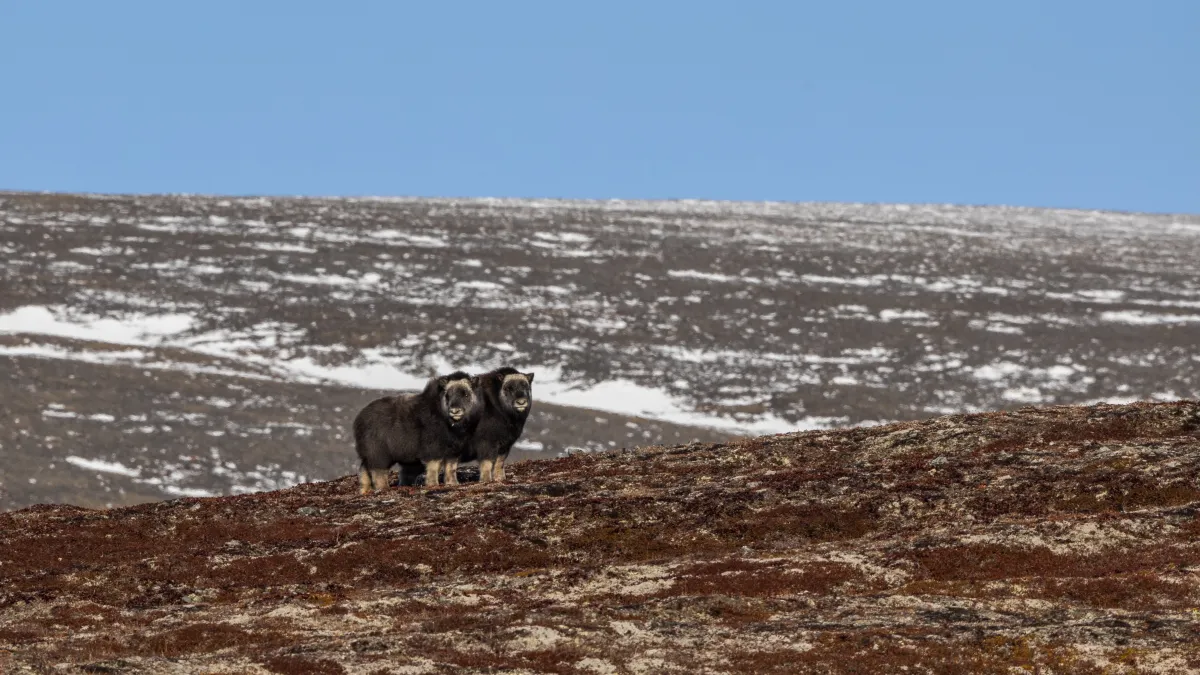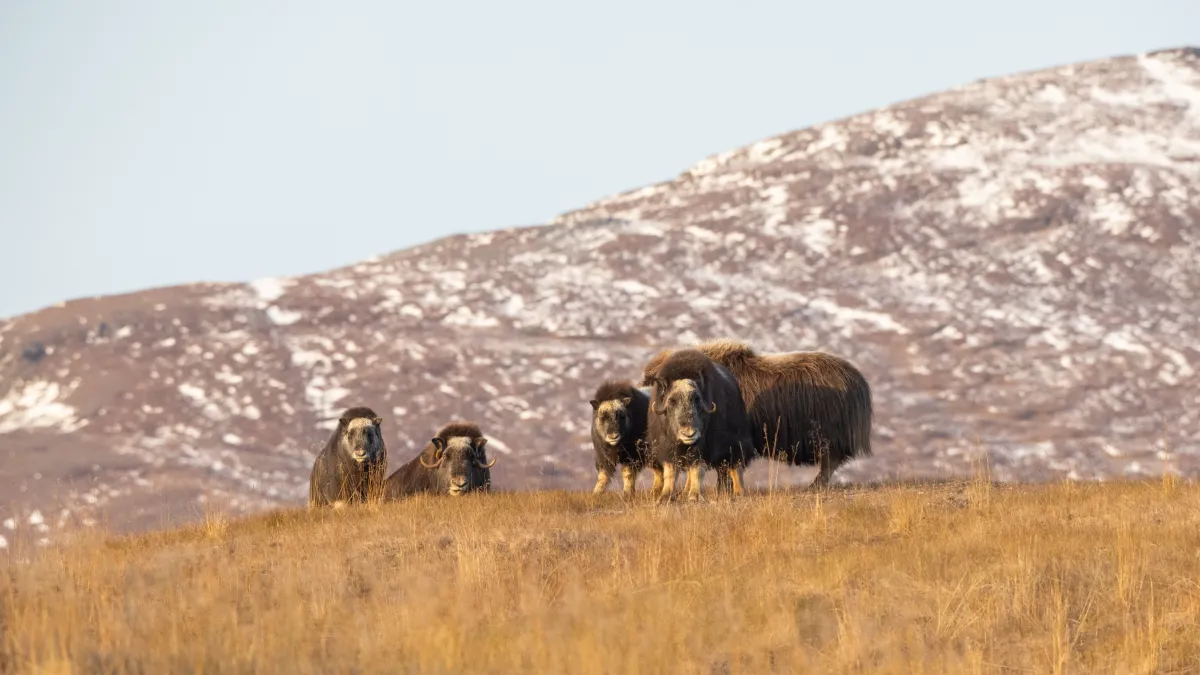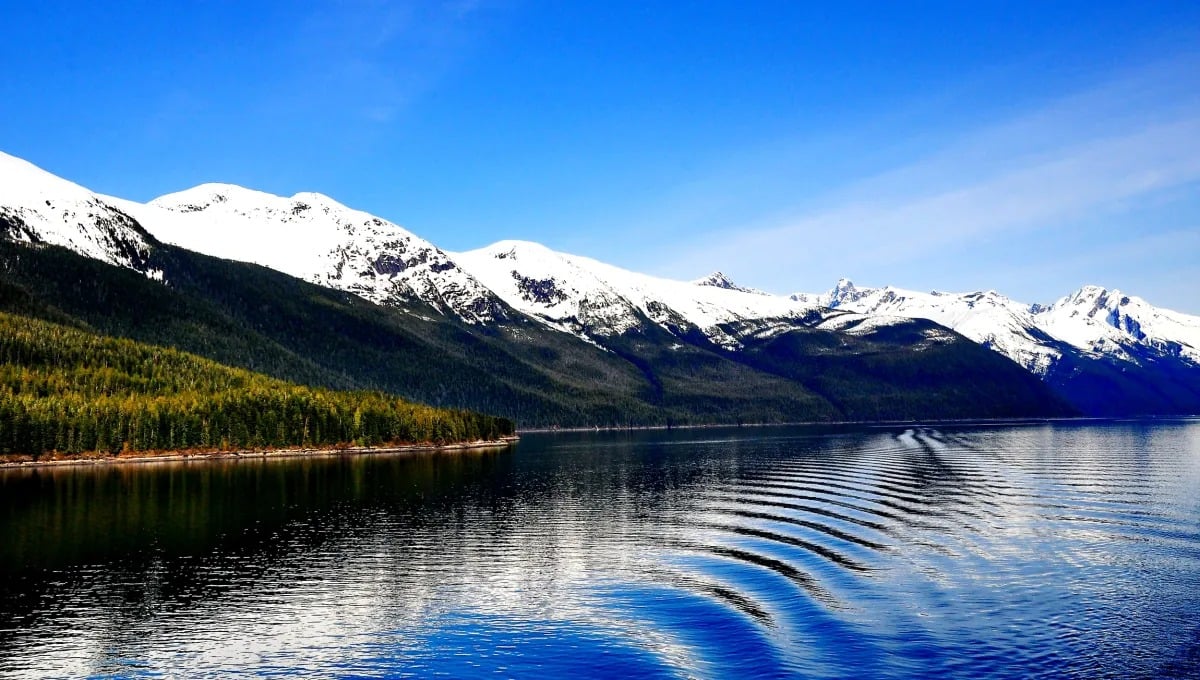
Nestled on the edge of the Bering Sea, Nome, Alaska, may seem an unlikely destination for wildlife enthusiasts. Yet, it is here, against the backdrop of stark tundra and whispering winds, that one of the Arctic's most majestic creatures - the muskox - roams, a testament to survival and conservation success.
I had the immense pleasure to photograph these amazing creatures in the wild during my last trip up to Nome in October 2023. In this guide, I’ll cover why viewing muskox is an unusual and unique experience for Alaska travelers, where to go to see them, and tips for safely viewing and photographing muskox in the wild.
The Rise and Fall of the Alaskan muskox

The muskox, with its shaggy fur and stoic demeanor, has wandered the Earth for thousands of years. These animals once trotted across the Bering Land Bridge into North America, coexisting with mammoths and saber-toothed tigers. They were a crucial part of indigenous cultures, providing materials for clothing and tools.
However, by the turn of the 20th century, muskoxen had vanished from Alaska, hunted to local extinction and starved out by a rapidly changing environment.
Recognizing the ecological and cultural loss, the United States Congress took action. In 1930, the muskox Project was born, aiming to bring these animals back to their ancestral lands. Thirty-four muskox were captured in Greenland and transported to New York for quarantine. Once they passed quarantine, the herd traveled by train and boat to Fairbanks. In 1935, they were moved to Nunivak Island, a large island in the Bering Sea, where their numbers could grow while they were protected from predation and poachers.
From the 1960s through the 1980s, descendants of this flourishing herd were systematically reintroduced to various regions across Alaska, including the Seward Peninsula, Nelson Island, the Arctic National Wildlife Refuge, and the vicinity of Cape Thompson, close to Cape Krusenstern. The program was so successful that it even facilitated the translocation of some muskoxen to Russia.
Muskox Viewing in Nome

Nome became a sanctuary for these reintroduced herds. The animals thrived, their numbers growing as they adapted to the tundra once more. Today, Nome is synonymous with muskoxen viewing, where the animals can be seen dotting the landscape, a scene from a time when wild giants roamed more of the Earth.
The easy accessibility to Nome via direct flights from Anchorage combined with an extensive road system into the tundra makes this arctic community the perfect destination for travelers interested in viewing muskox in the wild.

While herds can roam close to town throughout the year, you can plan your travel to maximize your possibility of seeing a herd or photographing specific behavior, such as seeing young calves.
Here is a quick breakdown of peak times to travel to Nome to view muskox:
Spring (May-June)
May is a particularly magical time in Nome as it ushers in the arrival of baby muskoxen. The sight of calves, with their soft, downy fur and playful antics, is a heartwarming spectacle and represents the continuity of life in this harsh climate. Due to increased likelihood of predation from wolves and bears, herds will stick close to town during the birthing season, allowing some of the best muskox viewing throughout the year. Just be sure to keep your distance, as mother muskoxen are extremely protective of their babies and will charge.
Summer (July-August)
Summer is a beautiful time in the arctic, where you can enjoy the midnight sun and warm days. Herds will continue to remain close to town, as bears and wolves continue to be a threat, but they may roam farther in search of fresh grasses. This is also a great time to photograph the millions of migratory birds who nest around Nome in the summer, or spot a lone wolf making its way across the tundra.
Fall (August-September)
Come September, the tundra becomes a stage for the rut, the muskox mating season. This period is characterized by the dramatic clashes of males, their powerful heads and sharp horns colliding in displays of strength and virility. Witnessing these battles is a raw and primal experience, a reminder of the muskoxen's Ice Age lineage, and can offer the opportunity for amazing photos. The rut typically begins at the end of August and runs through mid-September. Just exercise extreme caution around herds during this time, as males are charged up on testerone and will charge.
Winter (October-April)
As winter sets in and the bears retreat to their dens, the muskoxen move away from the town. The snow blankets the land, and the muskoxen become harder to spot against the white expanse and winter darkness, making this a less ideal time for wildlife enthusiasts to visit. The herds often move far into the hills, where they will only be accessible by snow machine or helicopter. However, this does offer the rare opportunity to photograph muskox in the snow or under the Northern Lights – but will cost more to do.
Tips for Ethical muskox Viewing

Observing muskoxen requires patience, respect, and an understanding of their behaviors. Remember, these are wild animals, so you should exercise extreme caution and bring a pair of binoculars and a telephoto lens, so you never need to get too close.
Here are some guidelines to ensure a safe and respectful viewing experience:
- Maintain a Safe Distance: Always keep a significant distance between yourself and the muskoxen. They are powerful creatures, and their need for personal space should be respected.
- No Dogs: Never bring dogs near a muskox herd. muskoxen often mistake dogs for wolves, their natural predators, and can react aggressively, potentially leading to tragic outcomes.
- Understand Their Signals: Pay attention to the muskoxen's body language. If an animal stops grazing and raises its head in your direction, it's a clear sign that you are too close. Retreat quickly and calmly to avoid causing stress or provoking a charge.
- Respect Their Wild Nature: These are not domesticated animals but wild creatures that should be treated with the utmost respect and caution. Their well-being and the safety of observers should be the top priority.
Tips for Staying in Nome
Nome is inaccessible by road from Anchorage, however, it is relatively easy to get to if you have a few extra days in your schedule. Alaska Airlines offers daily, nonstop flights from Anchorage throughout the year, and the flight is just over an hour. When flying within Alaska on Alaska Airlines, you can have two free checked bags, allowing you to pack everything you need for your trip.
Once you are in Nome, there are only a few accommodation options. I highly recommend the Dredge 7 Inn, a quaint, comfortable stay, echoing the spirit of Nome's gold rush era. Here, travelers can secure a room and a rental Jeep/truck, the latter being essential for accessing muskox herds outside of town. There are extremely limited rental car options in Nome, so by booking your room with your car, you are securing access to everything you need.

